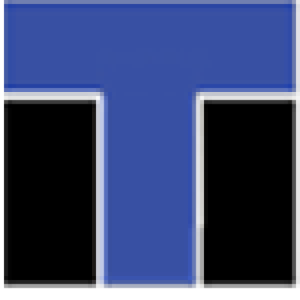
The future of drafting lies in advanced computer-aided design (CAD) services. They will be more transformative with innovation, automation, and the integration of cutting-edge technologies. The relationship between drafting, design, and innovation is reshaping the way products and structures are conceived and created. Contact ITI Technical College today for more information.
Drafting and design are not a continuation of conventional practices, but an exciting and challenging journey into virtual worlds. The future lies in converging technology, creativity, and sustainability to achieve goals.
Future Of Drafting And Design: AI And Machine Learning Integration
Incorporating artificial intelligence (AI) and machine learning (ML) is a significant advancement in computer-aided design. They provide the potential to revolutionize the design process by automating all repetitive tasks. Other AI and ML benefits include:
- Optimizing designs based on data analytics
- Generating design alternatives for projects
- Analyzing vast amounts of data
- Learning from past designs
- Providing valuable insights to designers
- Faster iterations and more efficient workflows
Virtual And Augmented Reality Are Key Components
Virtual reality (VR) and augmented reality (AR) provide designers with new ways to interact with CAD models. They can enhance the visualization of objects and speed up decision-making. These realities help designers step into virtual environments and better explore design iterations.
AR can overlay digital information onto the physical world to facilitate design reviews and onsite inspections. Combining VR and AR with CAD drafting provides these benefits:
- Enhances communication and understanding
- Reduces errors through all phases of design and drafting
- Accelerates the design validation process
- Allows for fast and easy design changes
Future Of Drafting And Design: Generative Design
 Generative design moves computer-aided design and drafting to an advanced level. It leverages algorithms to explore design iterations to meet objectives and work within specified constraints. It is powerful for these reasons:
Generative design moves computer-aided design and drafting to an advanced level. It leverages algorithms to explore design iterations to meet objectives and work within specified constraints. It is powerful for these reasons:
- Allows designers to general more innovative solutions
- Superior to traditional methods of generating solutions
- Produces optimized designs when combined with CAD drafting
- Produces designs that are more efficient, lighter, and stronger
- Produces cost-friendly and improved performance across varied industries
Customization And Personalization For Consumer Markets
Customized and personalized products for consumer markets are critical for higher sales in new and existing markets. CAD drafting software is evolving to meet consumer demands by tailoring solutions to meet their preferences and requirements.
CAD software enhances designers’ and drafting specialists’ abilities to create unique products to meet target audiences. This approach drives brand loyalty and customer satisfaction for products such as appliance designs and personalized medical devices.
| “Drafting and design are not a continuation of conventional practices, but an exciting and challenging journey into virtual worlds.” |
Parametric Modeling And 3D Printing Produce Awesome Results
Parametric modeling lets designers and architects create intelligent and adaptive models. These models can be easily updated and modified as project requirements require changes. Parametric modeling working with 3D printing technology creates new opportunities for rapidly producing prototypes and iterative designs.
CAD drafting software can use parametric modeling to create complex shapes, designs, and intricate projects that were not possible with older software. This allows designers and engineers to enlarge the boundaries of innovation across many industries where all benefit.
Cloud-Based Collaboration Is Useful For Multiple Stakeholders
 Cloud-based platforms provide seamless collaboration and communication for multiple stakeholders. Cloud-based CAD software opens the way for designers, clients, engineers, architects, and manufacturers to collaborate in real-time from different locations. This type of software provides several benefits that are effective, including:
Cloud-based platforms provide seamless collaboration and communication for multiple stakeholders. Cloud-based CAD software opens the way for designers, clients, engineers, architects, and manufacturers to collaborate in real-time from different locations. This type of software provides several benefits that are effective, including:
- Version control
- Instant updates
- Centralized data storage
- Fosters efficiency
- Improves productivity
- Provides more agility in designing
Green Focus For Drafting And Design
Drafting’s future is also linked to sustainable practices because there is an increasing emphasis on eco-friendly applications and solutions. Drafting professionals are creating designs that minimize environmental impact wherever possible. These applications are future-oriented:
- Integrating renewable energy sources
- Optimizing material usage and reducing waste
- Prioritizing energy efficiency
- Drawing inspiration from nature
- Using green roofs and more natural light
Drafting specialists are designing structures that harmonize with our environment and promote well-being. The future of drafting lies in creations that blend the natural world while promoting a resilient and sustainable future.
Key Takeaways For Drafting And Design
Creativity and innovation are guiding principles that are moving drafting and design into the future of limitless imagination. Digital tools, new technologies, and sustainable practices are responsible for visually appealing designs, products, and structures that are environmentally conscious. Work your way into this career with an Associate of Occupational Studies (AOS) Degree in Drafting and Design Technology from ITI Technical College.
For more information about graduation rates, the median debt of students who completed the program, and other important information, please visit our website: https://iticollege.edu/disclosures/




